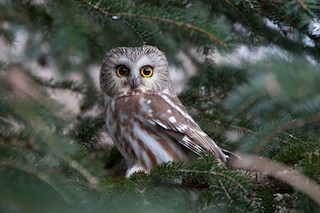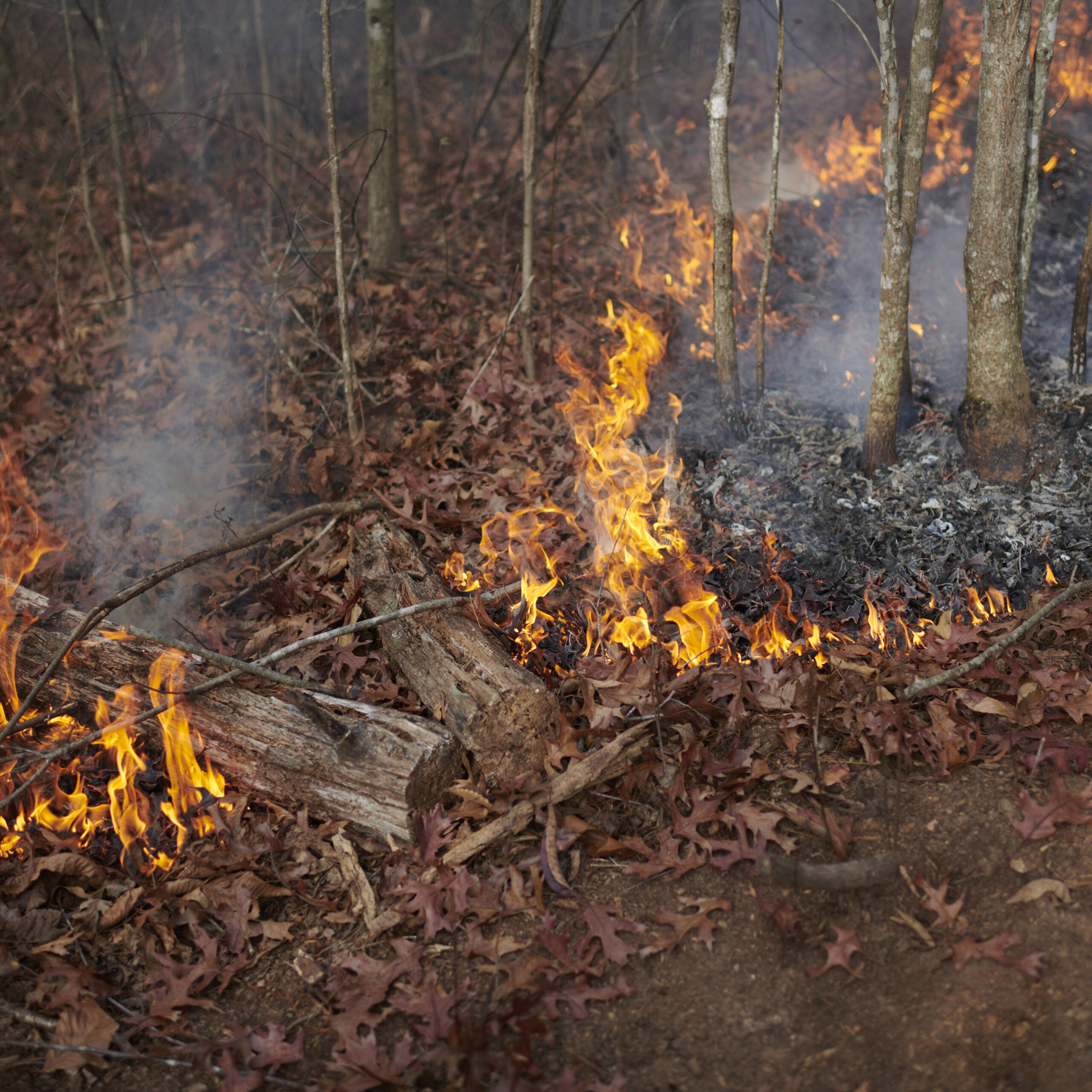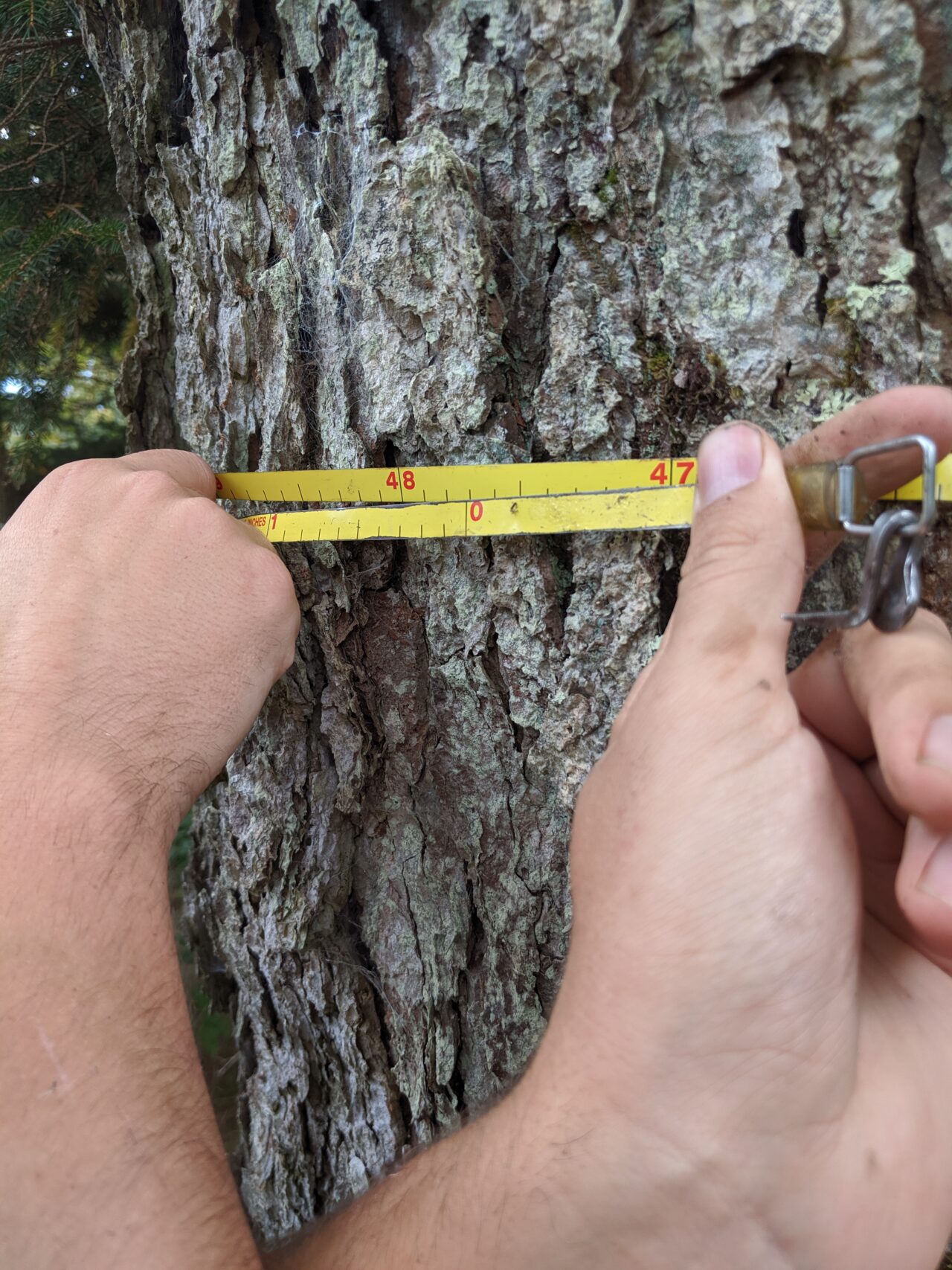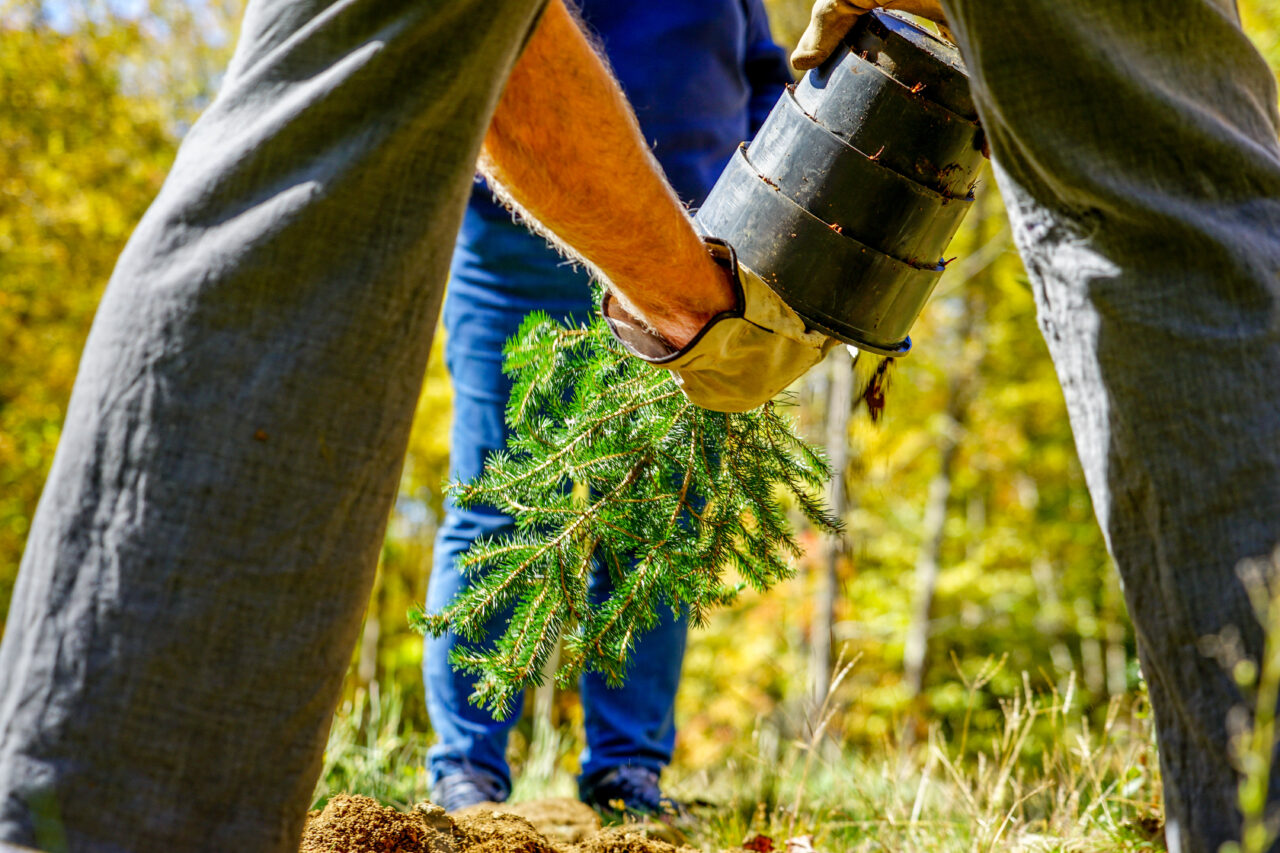Southern Appalachian Highlands Conservancy
Why Bird Conservation?
Degraded by logging in the nineteenth and twentieth centuries, Southern Appalachian red spruce-Fraser fir forests are one of the top two most endangered ecosystems in the United States. Common in Canada, these boreal ecosystems are extremely limited in the U.S. Red spruce are slow growing trees that eventually got replaced by hardwoods after extensive logging in the 1900s, so they are now present only in very small pockets of Southern Appalachia that didn’t get logged.
One of these pockets is owned and stewarded by the Southern Appalachian Highlands Conservancy (SAHC), an organization that conserves over 80,000 acres of habitat in the mountains of North Carolina and Tennessee. Since 1974, SAHC has led an effort to protect about 19,000 acres of land in the Highlands of Roan, including 15 acres of red spruce forest adjacent to Pisgah National Forest.
The bird species that live in this rare habitat are as unique in the U.S. as the red spruce forests themselves; in some cases, the populations have been isolated long enough that they may eventually become subspecies. Marquette Crockett, Roan Stewardship Director at SAHC, describes it like this: “These are microclimates that we’re managing. If you look at a map, you’ll see that they are common in Canada, and we have little teardrops of these ecosystems down the Appalachian range. If you look at bird species that depend on these forests, you’ll see the same thing—they’re boreal, and they’re in Canada, but they’re only present in these little teardrops down the Appalachians in the U.S.”

Bird species such as Northern Saw-whet Owl, Red Crossbill, Winter Wren, and Brown Creeper depend on these small patches of unique habitats. Protecting and managing these habitats also helps conserve the genetic diversity of the bird species that rely on them, which could someday be essential for the long-term survival of these species.
According to Crockett, a little management can make a huge difference in these limited habitats, but finding funds to support stewardship efforts can be challenging. In 2019, a $20,000 grant from the Cornell Land Trust Bird Conservation Initiative helped SAHC implement bird-focused habitat management in their remote red spruce forest. Funding also supported management of 18 acres of shortleaf pine habitat on the SAHC Community Farm near Asheville, NC, a popular and accessible property that serves as a demonstration site for SAHC’s habitat management work.
Spotlight Resources: Collaborative Partnerships, IBA Designation, point counts/eBird, Bird-focused Habitat Management

“Do not try to work in a bubble,” advises Crockett. As the stewardship director of a 13,000-acre area, Crockett knows how critical partnerships are in accomplishing landscape-scale goals, with each organization contributing unique skills and knowledge. This project was made possible due to contributions from many partner organizations, including North Carolina Wildlife Resources Commission, the U.S. Fish and Wildlife Service, the Appalachian Trail Conservancy, Virginia Cooperative Research Unit at Virginia Tech University, Southern Appalachian Spruce Restoration Initiative, North Carolina State Forestry, and Canaan Valley National Wildlife Refuge.
SAHC uses a GIS-based model that accounts for conservation value, rare habitats, adjacency, and connectivity, which results in strategic protection of highest value tracts, such as their red spruce forest in the Highlands of Roan, which is part of a designated Important Bird Area (IBA), land vital to birds that has been prioritized for conservation by BirdLife International. The SAHC Community Farm, where the shortleaf pine habitat is located, was donated by a landowner who saw its potential as an outreach and educational tool because of its location.
Planning efforts for this project were conducted onsite, with partners contributing to preliminary surveys and management plans. There were no eBird records for the project properties, so Crockett and Sarah Sheeran, SAHC Stewardship Director, started by conducting standard point count surveys to sample bird populations at the sites before initiating habitat management. The data from these point counts now serves as a baseline when assessing impacts of the practices over time.
Low-cost, low-impact forestry practices were then implemented at both project sites. This included girdling and small canopy gap creation at the 15-acre red spruce forest, and prescribed fire and invasive plant control at the 18-acre shortleaf pine site on the SAHC Community Farm property.
Point count surveys were conducted for three years after the project, with results recorded in eBird. As Crockett notes, the results of habitat management efforts are never instant, so patience is required. Having a long-term view is necessary to see the biological and ecological effects of this work, says Crockett.
Storing these years of bird data in eBird gives Crockett peace of mind, because it ensures longevity, consistency, and open access to the data. Many years from now, SAHC staff members will be able to download the data from this project and use it to evaluate the long-term success of the habitat management practices performed in 2020, and these data will also be accessible to people outside of SAHC to help inform future conservation work in these important habitats.
Making the Connection

This grant project provided funds for SAHC to educate the public, private landowners, and land managers. Since SAHC’s red spruce forest is off the beaten trail, outreach efforts for that portion of the project were geared toward college students and people familiar with the remote habitat—those already aware of the rare habitat and able to travel to it. The shortleaf pine forest serves as a well-visited demonstration and public engagement site, where community workshops are often held, due to its proximity to Asheville, NC.
The red spruce site has also served as an example for the U.S. Forest Service, which is conducting a region-wide environmental analysis on red spruce across several National Forests.
Crockett gave several presentations about the project, including at the National Land Trust Alliance Rally in 2019 and the Southeast Land Conservation Conference in 2021. The project was featured on SAHC’s blog, and outreach videos were created for educational purposes. One of these videos focuses on the shortleaf pine restoration project at the SAHC Community Farm. Another, titled Moments in Nature, features sights and sounds from the initial bird point count at the red spruce site.
Importantly, the habitat management practices in SAHC’s red spruce forest helped to increase connectivity to distant patches of spruce, notes Crockett. Grant funds also allowed SAHC to collect red spruce seeds, which were then planted on a 10-acre site where beech trees were declining due to a bark disease.
Advice to Other Land Trusts
Plugging into resources, developing clear-cut goals, and having a plan for communicating with partners is essential, says Crockett. She advises other land trusts to ask where their projects fit into the landscape and figure out what partners they can bring to the table to scale their work.
The birding community is particularly supportive of stewardship projects, notes Crockett, because they understand the connection between habitat management and protection of bird species. “Birds are so loved,” notes Crockett; as an example, the local Audubon Chapter donated their Birdathon money to SAHC to conduct a habitat management project on a protected parcel.
Be patient, Crockett also advises. Take a long-term view of projects, because birds may pop in and out of habitat. You might see them one year, then not see them the next as the habitat matures, Crockett says, so monitor projects for more than two or three years to validate the results of your habitat management projects over time.
Next Steps

Crockett is taking her own advice this year, returning to monitor the project sites four years after the grant work. With limited staff capacity, she’ll be using technology to help expand her coverage for bird point counts. SAHC is investing in a couple of Autonomous Recording Units (ARUs), self-contained audio recording devices, to help gather data about the bird species now present in their red spruce and shortleaf pine forests.
SAHC staff will also be measuring the red spruce trees to evaluate their health, and checking to see if girdled trees need to be retreated. On a broader scale, SAHC is continuing to ramp up the pace of strategic land protection. Because, as Crockett says, we all realize the importance of having healthy, protected forests in a changing climate—not only for the birds and other wildlife but also for the carbon sequestration and carbon storage the trees provide.
